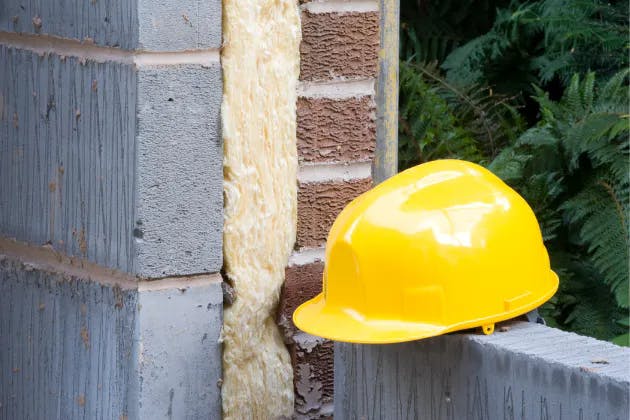Wall ties are critical components in cavity wall construction, serving as the unsung heroes that maintain structural integrity. These small but mighty elements bridge the gap between the inner and outer walls, distributing loads and ensuring stability. However, when wall ties fail, the consequences can be severe and far-reaching.
 Causes of Wall Tie Failure
Causes of Wall Tie Failure
Corrosion stands as the primary culprit in wall tie failure. As moisture and oxygen penetrate the cavity, they wage a relentless assault on metal ties, gradually weakening their structure. This process is particularly aggressive in coastal areas or regions with high humidity. Older properties built before the widespread use of stainless steel ties are especially vulnerable to this type of deterioration.
Mechanical damage is another significant factor. Ill-advised DIY projects or careless construction work can inadvertently damage wall ties. Drilling into walls without proper care or cutting ties during renovations can compromise their structural integrity, leading to failure over time.
Poor quality materials and improper installation techniques also contribute to wall tie issues. Substandard mortar quality can fail to provide adequate protection, while insufficient spacing or embedment depth during installation can render ties ineffective from the outset.
Signs of Wall Tie Failure
Recognising the signs of wall tie failure is crucial for early intervention. Horizontal cracks in the mortar or bricks, particularly along the brick courses, are often the first visible indicators. These cracks typically appear at regular intervals, mirroring the placement of the failing ties.
Bulging walls are another telltale sign. As ties fail, the outer leaf of the cavity wall may begin to bow outwards, compromising the structural integrity of the entire building. This bulging can be subtle at first but may progress rapidly if left unchecked.
Dampness on internal walls can also signal wall tie problems. When ties fail, they can create pathways for moisture to penetrate the cavity, leading to damp patches or stains on interior surfaces. This moisture ingress can exacerbate existing issues and create new ones, such as mould growth or plaster deterioration.
In severe cases, broken window ledges or frames may occur as a secondary effect of wall tie failure. As the walls shift and buckle, these fixtures can bear unintended stress, leading to damage or breakage.
The most alarming sign is, of course, collapse. While rare, it represents the ultimate consequence of prolonged neglect and serves as a stark reminder of the critical role wall ties play in building safety.
Consequences of Wall Tie Failure
The ramifications of wall tie failure extend far beyond aesthetic concerns. Structural instability is the most pressing issue, with the potential for the outer leaf of the cavity wall to collapse entirely. This poses a significant risk to occupants and passersby alike.
Masonry damage is another common consequence. As walls shift and ties fail, cracks can propagate through brickwork, compromising its integrity and potentially leading to costly repairs. These issues can cascade, affecting other parts of the house such as internal walls and floors.
Roof damage, while often overlooked, can be a serious secondary effect of wall tie failure. As walls buckle or shift, they can place undue stress on the roof structure, leading to leaks, sagging, or even partial collapse in extreme cases.
Prevention and Maintenance
Preventing wall tie failure starts with proper installation. Certified professionals should always be engaged for this critical task, ensuring that ties are correctly placed and embedded to the appropriate depth. The choice of materials is equally important, with corrosion-resistant options like stainless steel or titanium offering superior longevity and performance.
Adequate ventilation in the cavity plays a crucial role in preventing moisture build-up and reducing the risk of corrosion. Proper drainage and weep holes should be incorporated into the wall design to allow any moisture that does enter the cavity to escape efficiently.
Regular inspections are essential for maintaining the health of wall ties. For properties built before 1981, when the use of galvanised ties was common, more frequent checks may be necessary. Visual inspections can identify early signs of trouble, while professional assessments using specialised equipment can provide a more comprehensive evaluation of tie condition.
Repair and Replacement
When wall ties have failed, replacement is typically the most effective solution. This process involves installing new ties to restore the structural connection between the inner and outer leaves of the cavity wall. Modern replacement techniques often use resin-bonded ties, which can be installed with minimal disruption to the existing brickwork.
The repair process must be thorough, addressing not just the visible areas of damage but also adjacent sections that may be at risk. Restoration of structural integrity is paramount, ensuring that the wall is returned to its original strength and stability.
Contact our wall tie experts
The dangers of faulty wall ties cannot be overstated. From compromised structural integrity to potential collapse, the risks associated with failing ties demand prompt attention and professional intervention.
Regular inspections, proper maintenance, and swift action at the first sign of trouble are essential for preserving the safety and longevity of cavity wall structures. To contact our wall tie experts, you can fill in our online contact form.


